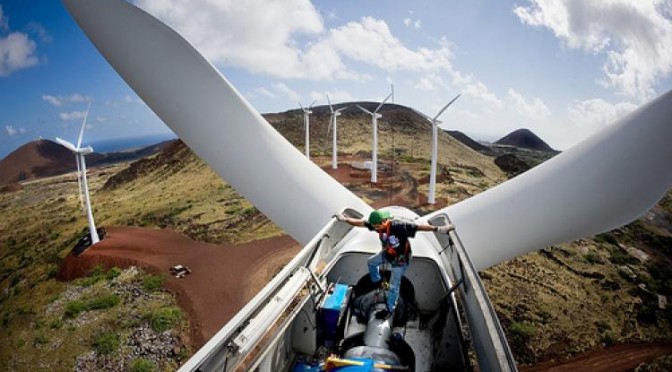The wind power, the second source of electric power in Brazil, behind the hydroelectric, represents 19,000 jobs in Brazil, as compared to 34,000 in 2018. Even with the fall, Brazil remains among the 10 most used in the world. this segment, behind China, Germany, United States, India, United Kingdom, Denmark, Mexico, Spain and the Philippines. The report states that, before the start of the COVID-19 pandemic, the wind sector was expected to expand due to planned installations.
Around 80% of this market is located in the northeast, which has the best wind conditions. The report indicates that local containment requirements and subsidized services for project developers have strengthened the national supply chain for wind turbines. It is also of high impact in the production of towers and the most moderate effect in the manufacture of wind turbines. The national content in the Brazilian wind sector is currently estimated at 80%.
Vestas, Siemens Gamesa, Nordex and GE manufacture wind turbines in Brazil.
Brazil continues to be the second country that employs the most in renewable energies. If the numbers of all the countries of the European block are sums up, Brazil will continue to be in the world leader, occupying the third place. Hay 1,158 million people working in some form of green energy in Brazil in 2019, the 10% of the world’s labor force deployed in renewable energies.
The data comes from the most recent report from the International Renewable Energy Agency. Of the 11.5 million of this kind in the world, compared to 11 million in 2018, 4.3 million are in China, 1.316 million in the European Union, 833 thousand in India and 756 thousand in EE. UU.
That sums up the five largest world employers. the sector.
In the group of the biggest employers, only the United States lost job postings: every 100,000 job posts were lost between 2018 and 2019. Brazil added around 30,000 in the same period; the European Union totaled 80 thousand; India something more than 100 thousand; and China 300 thousand.
The photovoltaic solar energy, which had 15 thousand deployed in Brazil in 2018, jumped to 44 thousand in 2019. The concentrated solar power still has no presence in Brazil. As a result, Brazil, which did not appear in the ranking of the most successful in terms of the latest report, now ranks among the biggest employers in the sector, behind China – with 2.2 million employees. – Japan, USA, India, Bangladesh, Vietnam and Malaysia, and from Germany and the Philippines. According to IRENA, the supply offers in the sector of photovoltaic solar energy have increased by 4% worldwide in the last year, accumulating 3.8 million working hours.
The segment of solar photovoltaic energy distributed generates 85% of these working costs. According to the report, more than half of all photovoltaic solar energy installations, and therefore many working jobs in this area, are concentrated in four states: Minas Gerais, Rio Grande do Sul, São Paulo and Paraná. The document shows that the expansion of the capacity to manufacture photovoltaic panels in Brazil is being driven by the attraction of Chinese manufacturers and specific lines of financing from the National Development Bank and regional development banks. Solar heating, differentiates it from solar energy to use natural light to warm water, as well as a retraction in China and the United States, but in Brazil and India. After a fall of three consecutive years, this labor market created a 6% in Brazil in 2019, totaling 43,900 work posts, each with the same percentage of photovoltaic energy.
Despite the development of photovoltaics, biofuels are still responsible for the position of Brazil in the ranking of generation of Irena employees, with 839 thousand workers, something over 832 thousand in 2018. About 200 thousand units are in the cultivation of sugar cane sugar, more than 150 thousand in ethanol processing and approximately 260 thousand in biodiesel production. The report also includes an approximate estimate of 200,000 indirect labor costs in the manufacture of equipment.


